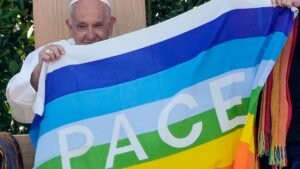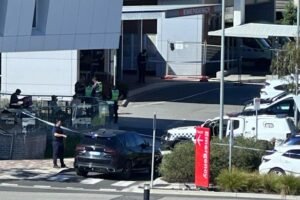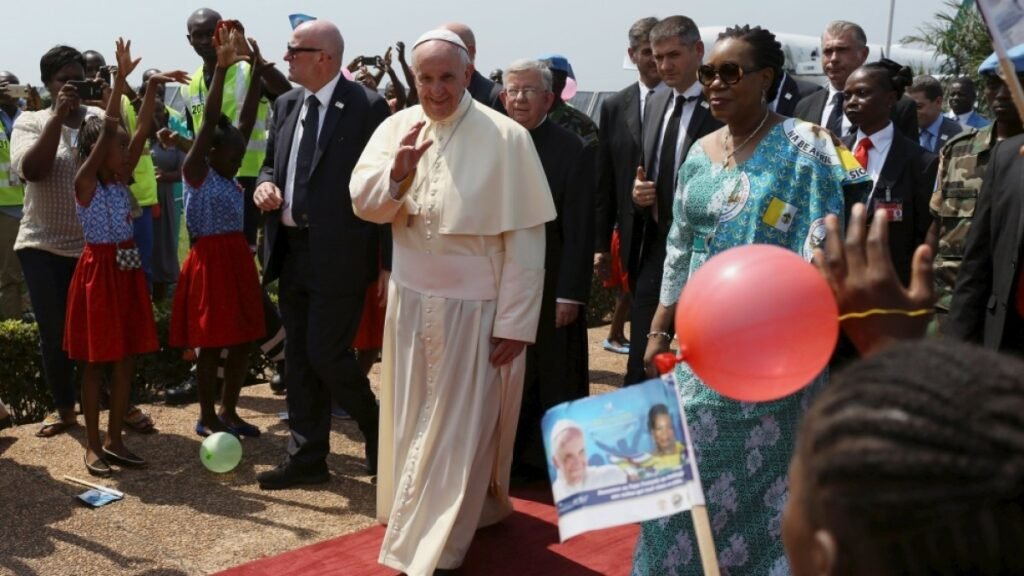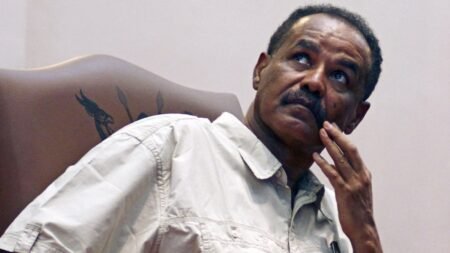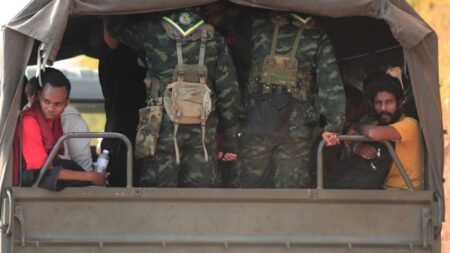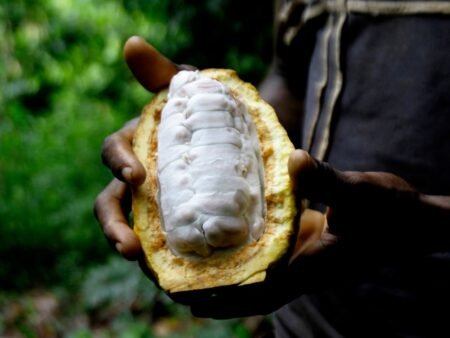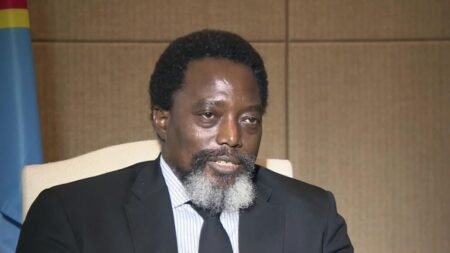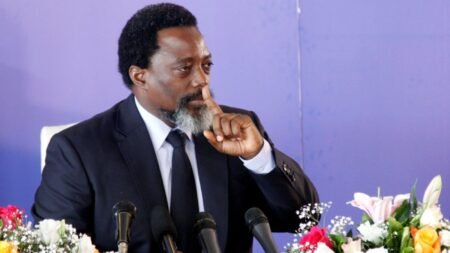Thousands of miles from the Vatican, the death of Pope Francis is being mourned by millions of Catholics on the African continent.
Francis, who was renowned for his liberal embrace of all groups of people and his vocal support for poor and marginalised communities, was a key figure on a continent sometimes referred to as the “future of the Catholic Church”, owing to the vast population of African Catholics: One in five Catholics is African.
Throughout his papal leadership, Pope Francis solidified recently established Vatican conventions by visiting 10 African countries, reinforcing engagements made by his predecessors. Before the 1960s, popes hardly left the Vatican.
Leaders across Africa, too, are mourning his death. Kenya’s President William Ruto referred to the late pope as someone who “exemplified servant leadership through his humility, his unwavering commitment to inclusivity and justice, and his deep compassion for the poor and the vulnerable”.
Here’s how the late Pope Francis prioritised Africa during his tenure:
Pope Francis’s many trips to Africa
Pope Francis made five trips to Africa throughout his papacy, during which he visited 10 countries.
He opted to visit nations that were in strife and were facing war or low-level conflict. He also focused on those struggling with economic and climatic challenges. The pontiff did not shy away from holding mass in ghettos or kissing the feet of warring leaders in hopes of bringing peace.
Those visits modelled those of Pope John Paul II (1980-2005), who visited more than 25 African countries in his 25 years of service, transforming the way the Vatican engaged with the continent. Pope Benedict XVI (2005-2013) visited three African countries over two visits.
These are the countries Pope Francis visited and when:
2015: East Africa (Uganda, Kenya, Central African Republic – CAR)
The pontiff’s six-day visit to three African countries in November 2015 was replete with colourful welcomes and huge mass events.
- In Nairobi, the Kenyan capital, the pope is still remembered and revered for holding mass in Kangemi, a low-income neighbourhood. There, he decried what he called “modern forms of colonialism” and pointed out that the country’s urban poor were excluded and underserved. He also criticised wealthy minorities who, he said, hoard resources meant for all.
- In a colourful welcome to Uganda, the pope enjoyed traditional dances from different ethnic groups. He blessed dozens of children thrust into his popemobile, the open-sided car, as he cruised through throngs of people gathered to catch a peep. He also visited a treatment centre for disabled children and spoke to more than 700 disabled people.

Healing a fractured country
Then, in the CAR, the pope did the unprecedented: He ventured into a Muslim neighbourhood amid religious tensions in the country that had lasted for months.
The PK5 neighbourhood in the capital, Bangui, had been off-limits to Christians before then, but as the pope made his way to a mosque there, crowds of Christians followed him in. People who had lost touch cried as they embraced each other.
Pope Francis urged both sides to lay down their arms and called Africa “the continent of hope” in his speeches. The visit would eventually lead to a peace agreement between the warring factions, although true peace would take another five years.
2017-2019 North Africa (Egypt, Morocco)
- In April 2017, Pope Francis visited Cairo for two days to support the Coptic minority there, the largest Christian community in the Middle East. Coptic Christians have been subject to marginalisation and deadly attacks for years in Egypt. Francis also reached out to Muslim clerics in the country.
- On his March 2019 trip to Morocco at the invitation of King Mohammed VI, the pope also called for religious tolerance and inclusion. He urged Morocco to respect the rights of refugees and immigrants.

2019 Indian Ocean (Mozambique, Madagascar, and Mauritius)
The same year, in September, Pope Francis turned his attention to Southern Africa, particularly countries in the Indian Ocean.
- In Mozambique and Madagascar, he called for an end to poverty and better protection of the environment in a region where climate change has brought intensifying storms and destructive cyclones.
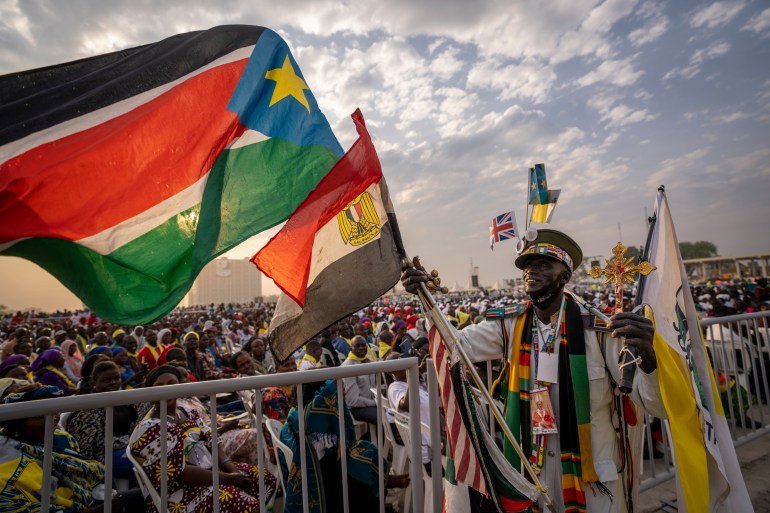
2023: Democratic Republic of the Congo (DRC) and South Sudan
Amid ongoing conflict and a humanitarian crisis brought on by armed factions looking to control the country, the pope’s visit to the DRC symbolically called for peace and reconciliation in the troubled central African nation.
The DRC, which has the largest number of Catholics in Africa – an estimated 35 million people – was an important one for the pope, who’d had to postpone the trip because of ill health. Congolese showed up in the thousands to welcome him.
A show of humility for South Sudan
In South Sudan, the pope called for continued peace between rivals President Salva Kiir and his deputy, Vice President Riek Machar. The country, Africa’s youngest, has been rocky since it gained independence from Sudan in 2011. Immediately after, and until 2013, a civil war broke out between factions loyal to the two leaders, leading to the deaths of hundreds of thousands and the displacement of millions of South Sudanese.
Five years before he set foot in South Sudan, the pope had expressed an unusual level of humility: He’d lowered himself with great difficulty to kiss the two leaders’ feet while they were on a spiritual retreat to the Vatican. He called on them to stick to signed peace agreements for the sake of the people.
Since January, the country has once more been on the brink of conflict. In a letter in late March, at a time when the pope was already encountering more serious health problems, he wrote again to the two leaders, calling for peace and dialogue.
Did the pope have a good relationship with African bishops?
Yes, Pope Francis enjoyed cordial relations with different African bishops and their associations. However, he also encountered criticism from some for his stance on same-sex unions.
In December 2023, the pope authorised the blessing of same-sex couples, an unprecedented move in the Church. He ordained that such blessings may be carried out as long as they don’t form part of the Church’s regular rituals, and if they are not carried out at the same time as other civil unions.
African bishop associations pushed back hard at this. Several countries on the continent are strongly against same-sex or other non-conforming gender categories due to religious and cultural beliefs.
One such association was the Symposium of Episcopal Conferences of Africa and Madagascar (SECAM), which, in a statement, rejected the rule and described the union of same-sex or non-heterosexual people as “unacceptable”. The group, under the lead of Cardinal Fridolin Ambongo of the DRC, said “these acts…must not be approved under any circumstances.”
Bishops in Asia also made similar calls for the Vatican to U-turn on the new ruling.
Responding to the criticism, Pope Francis told the Italian newspaper La Stampa that his emphasis was on the blessing of the people involved, not necessarily the union. He said: “We are all sinners: Why then draw up a list of sinners who can enter the Church?”
In the case of criticism from Africa, Pope Francis acknowledged the concerns. “For them, homosexuality is something ‘bad’ from a cultural point of view; they don’t tolerate it,” he said.
Read the full article here
